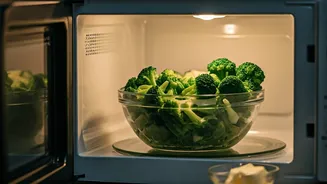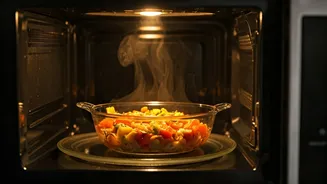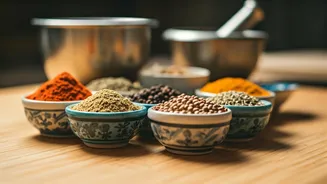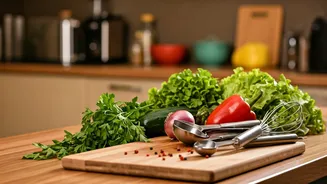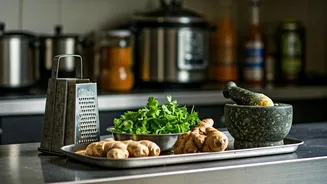Steaming Vegetables Easily
Steaming vegetables in the microwave is a simple method to retain their natural flavors and nutrients. Begin by washing and chopping your chosen vegetables into
bite-sized pieces. Place them in a microwave-safe dish and add a tablespoon or two of water. Covering the dish with a microwave-safe lid or plastic wrap, poke a few holes in the wrap to allow steam to escape. Cooking times will vary depending on the vegetable and your microwave's power, but generally, start with 2-3 minutes, checking for desired tenderness. Carrots, broccoli, and green beans are excellent options. Steaming preserves vitamins and minerals that can be lost through boiling, giving you a healthier side dish with minimal effort. This process is far quicker than traditional stovetop steaming.
Softening Butter Quickly
Waiting for butter to soften can be a frustrating delay when baking or cooking. The microwave offers a quick solution. Place the butter (still in its wrapper) on a microwave-safe plate. Microwave in short bursts, about 5-10 seconds at a time, on a low power setting or the defrost setting. Check the butter after each burst, as it can melt quickly. The goal is to soften it to a spreadable consistency, not to melt it completely. Using a low setting is crucial to prevent the butter from turning into a liquid. This method is especially useful when you need butter for a recipe right away, saving you from waiting or the struggle of cutting cold butter.
Melting Chocolate Perfectly
Melting chocolate can be tricky, as it can easily seize or burn. The microwave provides a controlled and efficient way to melt chocolate for various recipes. Chop the chocolate into small, even pieces and place it in a microwave-safe bowl. Microwave in 15-20 second intervals, stirring well after each interval. The stirring is crucial to distribute the heat evenly and prevent burning. Continue microwaving and stirring until the chocolate is smooth and fully melted. White chocolate is particularly prone to burning, so pay extra attention. This method is perfect for melting chocolate for dipping fruits, making ganache, or any recipe that requires melted chocolate. Ensure no water gets into the chocolate, as even a small amount can cause it to seize.
Reviving Stale Bread
Stale bread can often be salvaged with the help of your microwave. The microwave helps restore moisture to the bread, making it soft again. Wrap the stale bread in a damp paper towel. Microwave for short intervals, such as 10-20 seconds, checking for softness. The damp paper towel creates steam, which rehydrates the bread. This method works best for smaller pieces of bread or individual slices. Over-microwaving can make the bread rubbery, so keep a close eye on it. This is a practical tip for preventing food waste and enjoying bread that might otherwise be discarded. Using a damp towel is the key to achieving the desired result.
Cooking Bacon Crisply
Cooking bacon in the microwave is a simple method for achieving crispy bacon with less mess than frying it on the stovetop. Line a microwave-safe plate with paper towels. Arrange the bacon strips in a single layer on the paper towels. Cover with another layer of paper towels. Microwave on high power for 1-2 minutes per strip, depending on your microwave's wattage and your desired crispiness. The paper towels absorb the grease, making the bacon crispy. Check the bacon frequently, as cooking times will vary. This method is quick, easy, and reduces splattering, making cleanup a breeze. Remember to let the bacon cool for a few seconds before eating it.
Making Crispy Chips
Craving crispy chips? Your microwave can deliver this satisfying snack. Thinly slice potatoes, sweet potatoes, or even tortilla chips. Arrange the slices in a single layer on a microwave-safe plate lined with paper towels. You can lightly season the chips with salt, pepper, or your favorite spices before microwaving. Microwave on high for 2-4 minutes, checking frequently to prevent burning. The cooking time will vary based on the thickness of the chips and your microwave's power. The paper towels help to absorb moisture, creating crispy chips. This is a healthier alternative to deep-fried chips, as you can control the oil content. Enjoy a quick and easy snack made right in your microwave.
